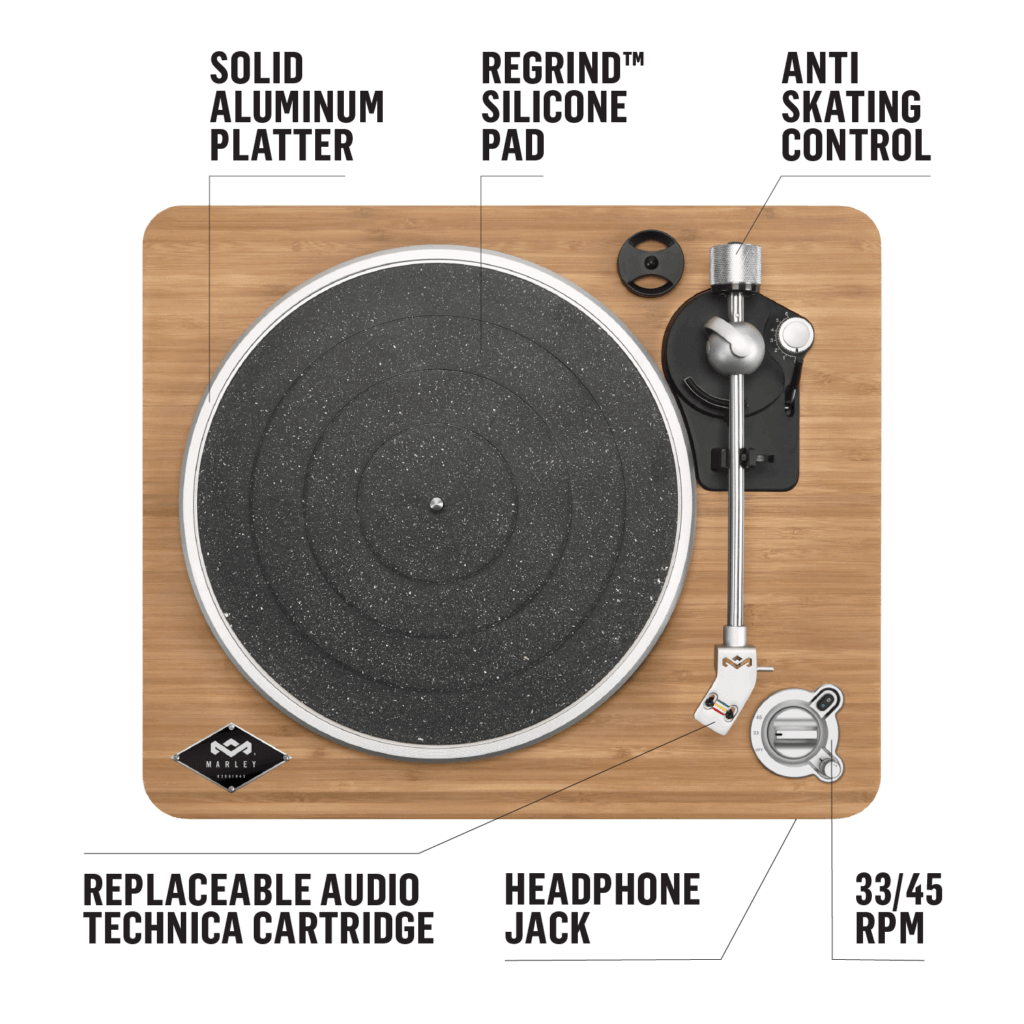How Does A Record Player Work
Posted by House of Marley on Sep 16th 2021
The timeless ritual of spinning records is a classic way to listen to music, but have you ever wondered...how do record players work?
As the old saying goes, “If it isn’t broke, don’t fix it.” The basic technology that makes records players work hasn’t changed much since its invention. Even modern record players with Bluetooth capabilities have the same mechanics that’ve been used for decades.
In 1877, Thomas Edison invented the phonograph, which is the earliest ancestor of the record player. The photograph recorded sound by carving sound vibrations into a cylinder covered in aluminum foil. Prior to the phonograph, other inventors made devices to record sound, but Edison's phonograph was the first device that successfully and consistently reproduced sound.
Edison’s phonograph paved the way for other inventors to improve the design by finding better ways to record and reproduce sound. The black disc we recognize today was created by Emile Berliner in 1887, who began using discs made from a dense material called shellac. Vinyl records made their debut in 1948, following a series of other advancements credited to various companies who commercialized the record player in America.
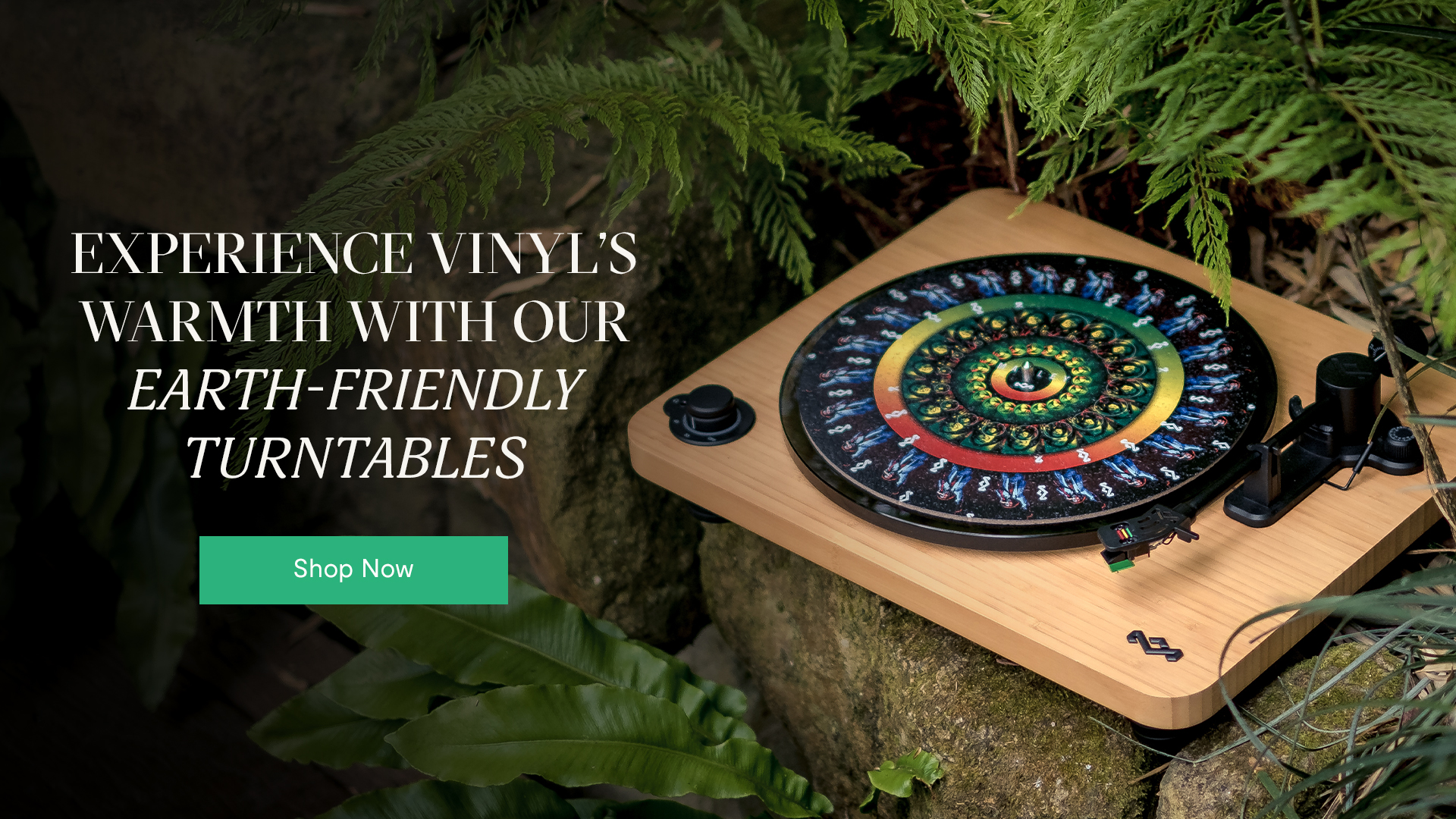
The Parts and Features of a Record Player
So, what exactly is a record player made of? Below you’ll find an overview of the components that make a record player work. Most of these features are present in every record player, but a few are a little less universal.
Turntable Platter
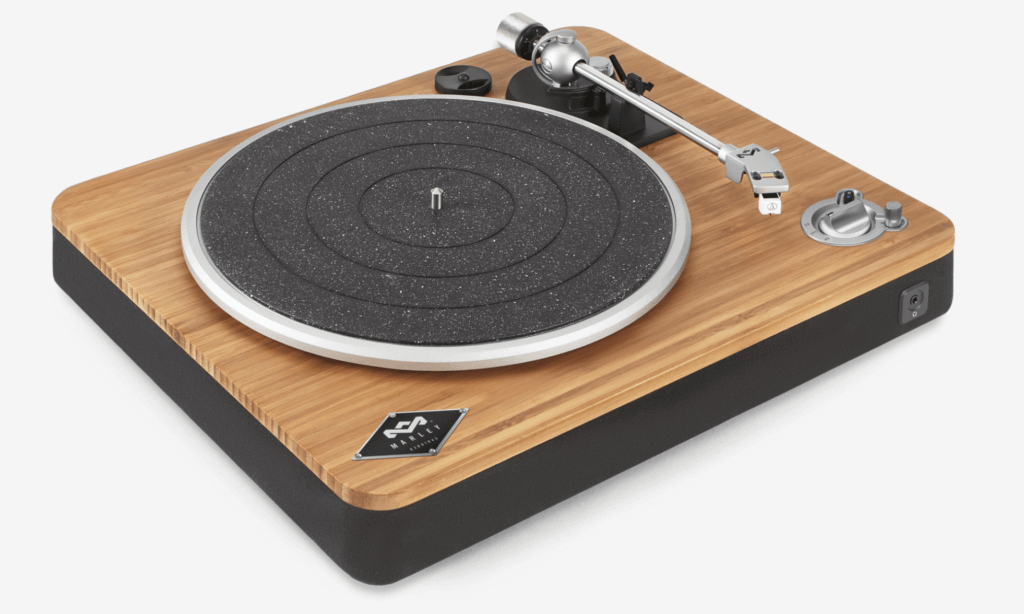
The turntable platter is the spinning surface of the record player upon which you place your vinyl record, and it can be made of a variety of materials. For example, the platters on our Stir It Up Turntables are made of a strong and lightweight aluminum alloy. Most people keep a rubber mat on top of the turntable platter to keep their records from slipping around as well as for their anti-static properties, and this usually comes with your turntable.
Belt-Drive vs. Direct-Drive
The drive is the component that causes the turntable platter to spin. In other words, it drives the platter. With a belt-drive, the motor is off to the side and a belt is used to turn the platter. Direct-drive record players have the motor directly under the platter and can start and stop more quickly.
Direct-drive turntables are more popular with DJs because they start and stop more quickly, but they have a few downsides. The biggest downside is sound quality. Since the motor is directly under the record, the motor vibrations can get picked up by the stylus and can distort the music. It can also make it more cumbersome to replace the motor if needed.
Since belt-drive record players have the motor off to the side, the sound of the motor is isolated from the stylus, retaining the purity of the music. In our eyes, that alone is worth waiting an extra moment for the platter to get up to speed, which is why we use belt drives for our Stir it Up Turntables.
Motor
Belt-drive and direct-drive record players are powered by a motor to rotate the platter. The motor can make a difference in stylus tracking and sound fidelity. At House of Marley we use a DC servo-controlled motor system for improved speed drift and stylus drag sensitivity.
Speed Selectors
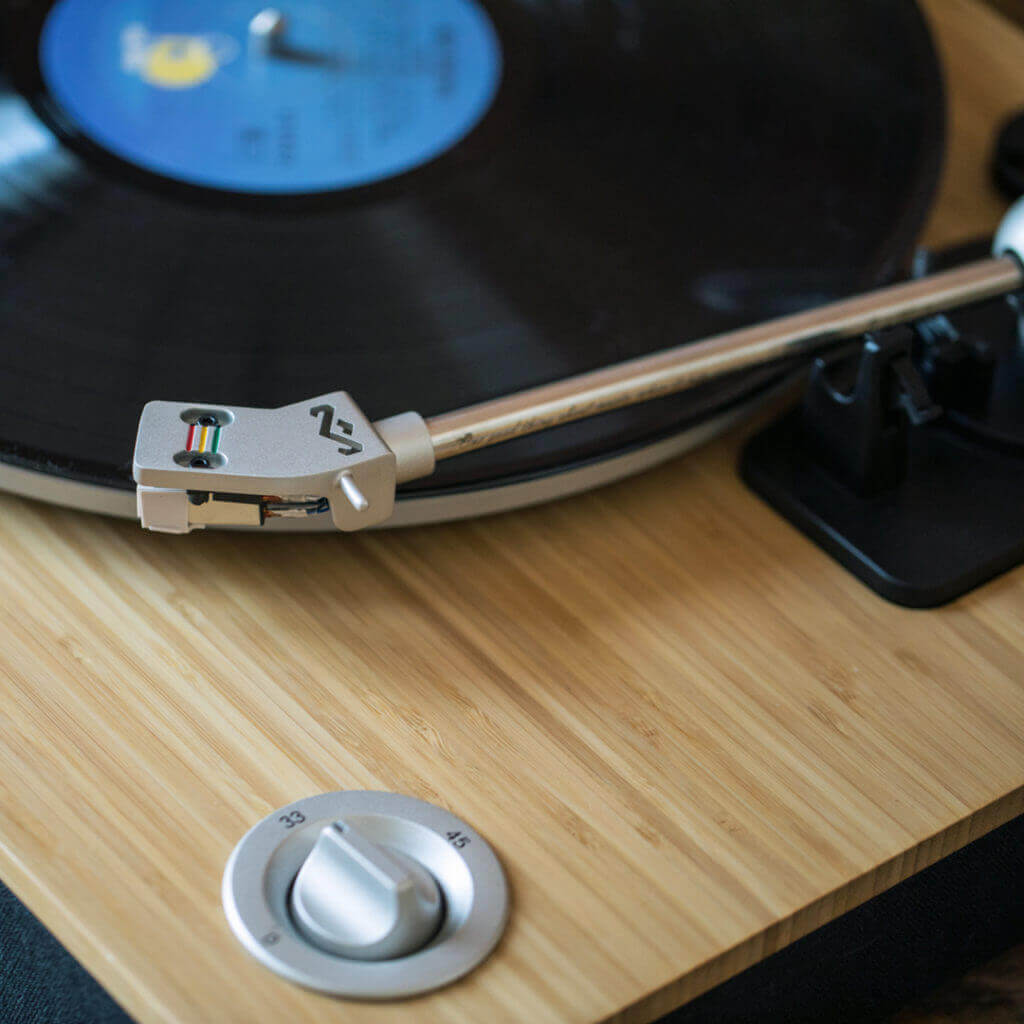
Record player speeds are measured in rotations per minute, or RPM. That's the number of times a record will spin on the platter over the course of 60 seconds.
Most types of vinyl records are sold at two speeds: 33 1/3 and 45 RPM. 33 1/3 are LP or long-playing records and 45s are usually 7" singles (though some 12" singles play at the 45 speed). Our Stir it Up Turntables have settings for both.
DJ turntables often have the ability to choose any speed under the sun. DJs need this to match tempos between songs, but it's not necessary if you just want to enjoy your record collection the way those records were meant to be heard.
Stylus (aka Needle) and Tonearm
The stylus (or needle) is the point at the end of the tonearm that drags across the grooves of the record, sending sound waves to your speaker system. Needles can be sold and replaced as cartridges, as they do get dull and wear out as you use them. A dull needle can damage your record, so if you notice your record is skipping a lot and an adjustment to the counterweight doesn't fix it, swap it out.
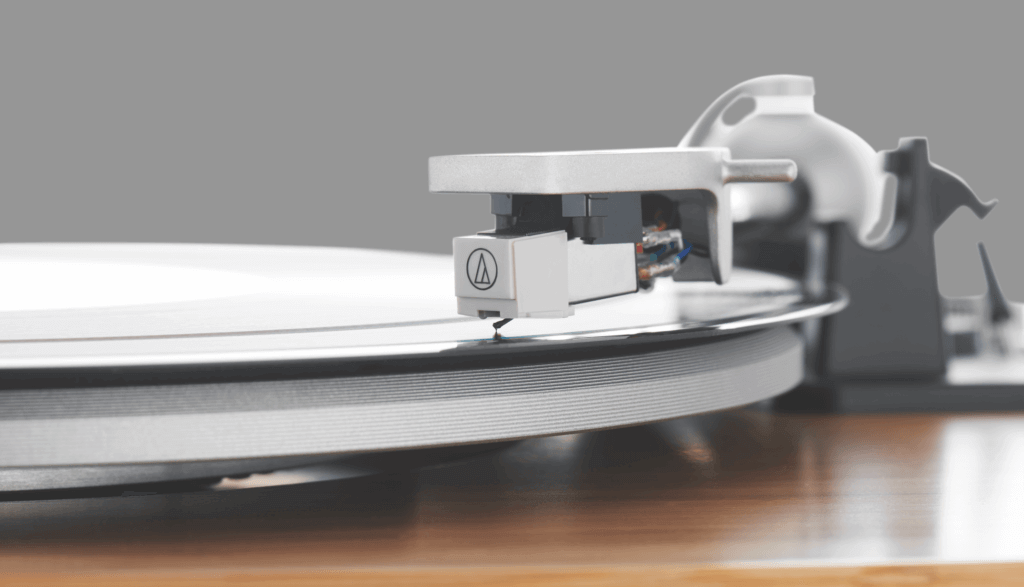
For our Stir It Up Turntables, we use industry-renowned moving magnet cartridges that deliver good musical detail with a slightly bright edge to bring out all the detail in your favorite records.
Counterweight
The counterweight, or counterbalance, is part of the arm on your record player that can add or remove weight on the stylus needle, ensuring that the right amount of pressure is being applied to the record. After all, the needle should effortlessly drag across the grooves, not skip across nor dig into the record.
The lack of a counterweight is one of the biggest issues with budget record players on the market. If you've ever seen a nickel taped to the top of a record player arm above the stylus, it's because someone's record player kept skipping and that was their solution. It's a cheap solution, yes, but having an actual counterweight is ideal. A nickel might not seem like much, but it could be adding too much weight, damaging your beloved vinyl collection. Suddenly, that 5-cent fix that separated a $50 record player from a $250 record player might end up costing you a lot more.
Preamp
Before your speakers can audibly play music from your record player, the signal needs to be boosted by something called a pre-amp. That’s because the signal coming from the needle isn’t amplified at all. Like an unplugged electric guitar, it needs to be amplified.
Not all record players come with a pre-amp. Our Stir it Up Turntables do, but we also allow you to use your own if you prefer. If your record player does not come with a pre-amp, you will need to buy one. Pre-amps start in price at around $15 on the low end to hundreds or even thousands of dollars for professional-quality preamps.
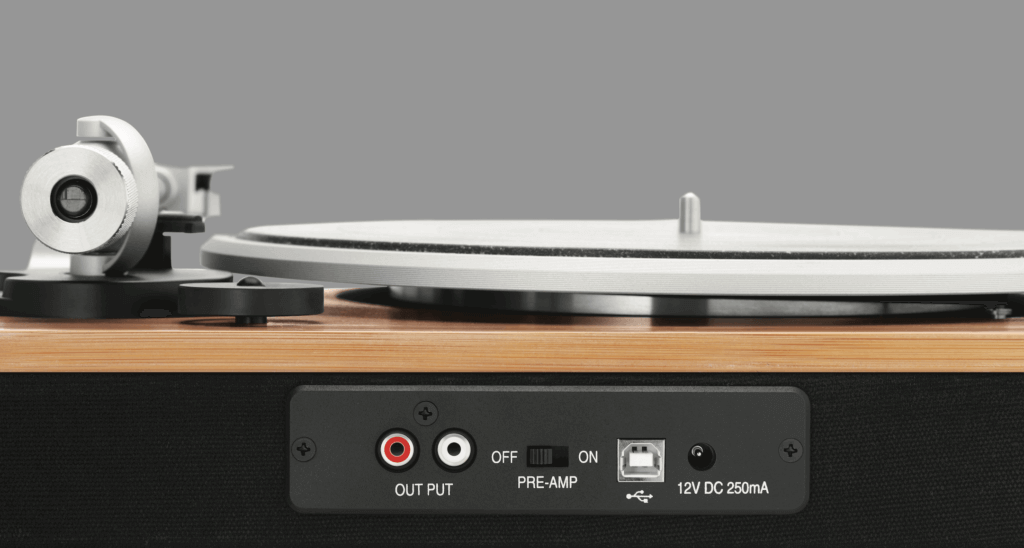
Outputs and Inputs
We’ve already talked about preamps, which leads us to outputs and the less-common inputs.
The most common outputs are RCA outputs. Those are the red and white outputs and cables that you plug into the backs of speakers, a pre-amp or a stereo receiver. You may also have wireless Bluetooth connectivity that allows you to pair with Bluetooth speakers. Some record players also have USB connectivity or other aux/line outs, though these are less common.
It’s rare, but some record players also have ways to input audio signals. It’s more common for oddball vintage record players or DJ turntables, but it’s something you may find in your shopping. Some older record players are full home entertainment systems, so they came equipped with a lot of extra features—some even had instrument inputs for jamming along to the music!
How a Record Player Works
So now you know the nuts and bolts—now let’s learn how a record player rotates and reproduces sound.
Rotating the Platter
The first part of the process involves the motor—the heart of every record player. It creates the movement that pulls the belt and rotates the platter. The record is held by the spindle that protrudes from the center. For optimal playback, the motor needs to maintain a consistent speed without producing audible noise that can be picked up by the needle.
Record player motors are either AC or DC. Both styles are made using a combination of bearings and magnets, and the quality of these parts affects the efficiency of the motor. Although AC motors are more affordable, DC motors are quieter. For minimal noise, choose a record player that has a DC motor paired with a stable platter.
Tracing the Groove
Vinyl record grooves are imprints of recorded music—we’ll save that explanation for another article! As the record rotates, the stylus travels through the groove to capture the music written on the record. The grade of the stylus affects the accuracy of sound reproduction. Styli are traditionally made from diamond or sapphire and come in a variety of shapes. Finer shapes trace the walls of the groove more closely for improved fidelity.
For the best performance, the tracking force and alignment of the cartridge needs to be properly adjusted. This allows the stylus to follow the center of the groove evenly. A misaligned cartridge can lead to stylus wear, distortion, and skipping. Too much tracking force may permanently ruin the grooves of your records.
So, how does the cartridge translate stylus vibrations into electrical signals? Cartridges are transducers that convert mechanical energy into electrical energy. The stylus vibrates against the walls of the groove, causing the magnets to move back and forth near a coil. This is known as a moving magnet cartridge. Moving coil cartridges work the opposite way by modulating coil movement in a magnetic field.
Amplifying the Signal
The signal from the record player is sent to a preamp to make the output level compatible with your system. This is called the phono stage. Some record players feature built-in phono stages, but most traditional models require an external preamp.
After the phono stage, the signal is sent to the speakers. Depending on your speaker setup, the signal might go through a home receiver or speaker amplifier first.
No matter which type of system you have, listening to music through a great record player will always give you a rich, warm sound!
Press Play
The record player has survived for over a century, and listeners all over the world still love them. Thomas Edison’s simple curiosity and Emile Berliner’s pursuit of perfection led to one of the most enjoyable ways to listen to music. Other formats have come and gone, but none have had the staying power of vinyl and record players.
Now that you know how record players work, you can get started with one of your own.
Shop House of Marley Stir it Up turntables and our Get Together Duo Bluetooth Speakers for a quality turntable with premium sound, unmatched design and a balance of features.
